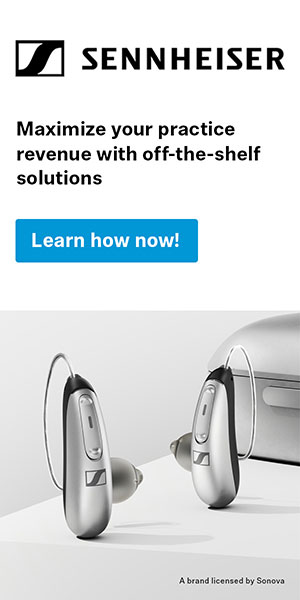The success of HEI's clinical trial led to implantation of the same single-channel device in the first preschool-aged child the following year. Soon after, other centers in the U.S. initiated FDA pediatric clinical trials under the guidance of the House Ear Institute in partnership with 3M Company.
Cochlear implants are surgically implanted electronic devices that also include externally worn components. The implants provide sound information for people who are unable to hear conversational-level speech through the use of even the most powerful hearing aids.
"Today, pediatric cochlear implantation has become standard clinical practice across the globe," said Laurie Eisenberg, Co-Director of the Children's Auditory Research and Education (CARE) Center at House Ear Institute. "This is a remarkable outcome when one considers that 30 years ago the implant technology was crude and the idea of implanting children was abhorrent to many in the scientific and clinical communities."
"Although there a many reasons why cochlear implants have become as successful as they are in helping deaf people with profound hearing loss to hear sound, it is the courage and commitment of a small group of clinicians and parents of deaf children who were instrumental in the eventual success of this technology for children," continued Eisenberg, who was an audiologist on the first pediatric cochlear implant team in 1980.
Since the summer of 1980, HEI and House Clinic surgeons have implanted approximately 600 children. In the early 1990s, typically 12 children per year were implanted. In 2009, House Clinic surgeons performed 74 cochlear implants on children, with 44 of those implants on children under 5-years-old.

Robert Rainey sits at one of his first mapping appointments in 1983. Robert went on to receive a Ph.D. and works at House Ear Institute performing DNA research in a cell and molecular biology lab.
In the late 1980's, HEI became the first center in the United States to implant a young child with a multi-channel device. The multi-channel cochlear implant was FDA-approved for pediatric use in 1990. With the development of multi-channel cochlear implants, recipients have been able to realize even greater benefits from this technology.
The FDA approved implanting children at 12 months old in 2000. House Ear Institute researchers participated in a national study led by Johns Hopkins University. Findings from this study were published in April 2010, showing the earlier a child with hearing loss is implanted the more successful the spoken language development outcome is for a child.
To further improve auditory and oral communication results for children, the growing trend across the country is for bilateral cochlear implants.
"Since the benefits of bilateral hearing have been proven, we are increasingly implanting one-year-olds with bilateral cochlear implants," said William Luxford, M.D., House Clinic Associate. "In addition, we are seeing more children we implanted as toddlers who are now coming back as teenagers to get a second implant."

Mark Root, 1-year-old, sits on his mom's lap at his first mapping appointment for his bilateral cochlear implants. Mark has the processors adjusted by his mom, Jennifer Root, and audiologist, Jamie Glater. Mark had surgery for bilateral cochlear implants on the same day his older sisters, Grace and Evelyn had surgery for their 2nd implants. All 3 children have bilateral cochlear implants.
House Clinic surgeons have trained colleagues around the world to perform the cochlear implant surgery. The cochlear implant has proved to be one of the most significant advances for people with hearing loss. According to 2009 data from the National Institutes of Health, a total of 25,500 children in the United States have received cochlear implants.
The success of HEI's pediatric implant program can be attributed to the CARE Center's multidisciplinary approach involving audiologists, speech-language pathologists and psychologists. In addition, the implant team includes an educational liaison that bridges the gap between the CARE Center, the school and the families trying to find the best educational environment for their children.
"A cochlear implant provides a child with access to sound and the surgery is the first step," said Melinda Gillinger, House Ear Institute Educational Liaison and mother of cochlear implant recipient. "I work with families, school districts, regional centers, and the implant center to bring everyone together to create an educational or follow up plan to meet the needs of the child and the family."
Gillinger provides parent support, teacher education and training at schools throughout Central and Southern California. Parents of cochlear implant recipients from other hospitals or centers that do not have an educational liaison have contacted Gillinger for assistance. House Ear Institute has created a multidisciplinary model with the educational liaison all centers performing cochlear implant surgeries should provide to their patients and families.
"The key factor for a child with a cochlear implant to be successful is the family," said Gillinger. "We cannot simply provide a child with a cochlear implant without helping the parents to understand their new roles as teacher, language facilitator and advocate."
About the House Ear Institute
The House Ear Institute (HEI) is a non-profit 501(c)(3) organization dedicated to advancing hearing science through research and education to improve quality of life. HEI scientists investigate the cellular and molecular causes of hearing loss and related auditory disorders as well as neurological processes pertaining to the human auditory system and the brain. Our researchers also explore technology advancements to improve auditory implants, diagnostic techniques and rehabilitation tools. The Institute shares its knowledge with the scientific and medical communities as well as the general public through its education and outreach programs.

